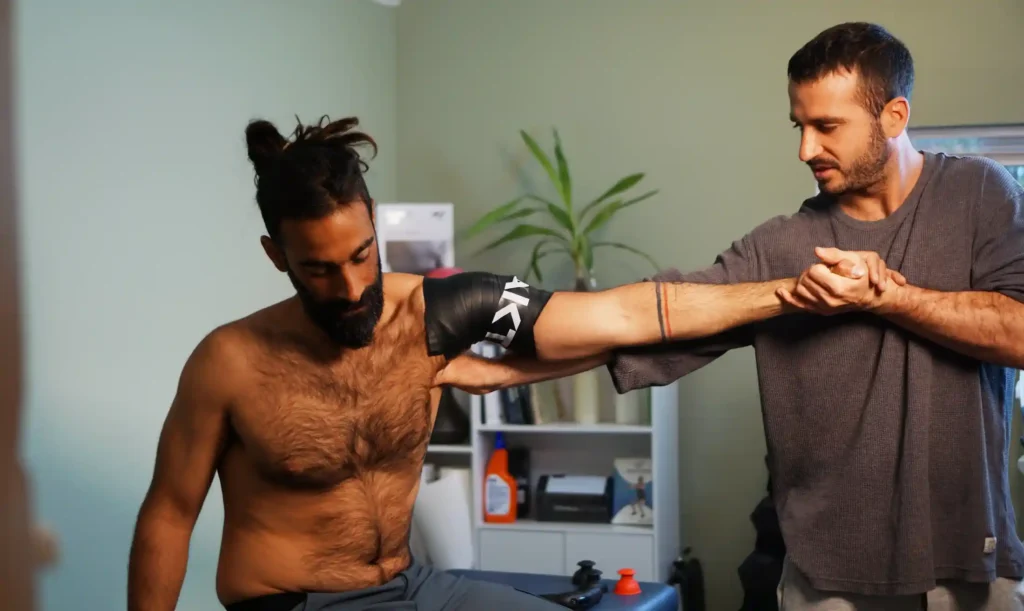Unlocking the Key to Joint Health
Many individuals face limitations in daily movement due to joint stiffness, chronic pain, or past injuries. The impact of restricted mobility goes beyond physical discomfort, often affecting mental well-being and overall quality of life. Soft tissue therapy has emerged as a crucial method to improve joint flexibility and restore natural movement patterns. By addressing muscle tension, scar tissue, and adhesions, soft tissue therapy for joint range of motion can help individuals regain strength and prevent further injury. Understanding its benefits is essential for those seeking a proactive approach to musculoskeletal health.

The Role of Soft Tissue Therapy in Mobility Enhancement
Soft tissue therapy focuses on manipulating muscles, ligaments, and fascia to relieve tension and enhance mobility. The therapy targets areas that restrict movement, promoting improved circulation and reducing inflammation around affected joints. Regular sessions can gradually increase flexibility, making daily tasks easier and less painful. The incorporation of soft tissue therapy for joint range of motion in rehabilitation programs ensures that movement patterns are restored naturally, reducing compensatory strain on other body parts. This approach is particularly beneficial for athletes and individuals recovering from musculoskeletal injuries.
Techniques and Benefits of Soft Tissue Therapy
Various techniques are employed in soft tissue therapy, including myofascial release, deep tissue massage, and trigger point therapy. Each technique is designed to address specific muscle groups, enhance tissue elasticity, and improve joint function. Enhanced joint mobility from soft tissue therapy for joint range of motion reduces the likelihood of further injury while optimizing performance in physical activities. Moreover, consistent therapy sessions help maintain long-term joint health, supporting improved posture and decreased muscular tension. This makes it an essential component of comprehensive rehabilitation plans.
Personalized Rehab Exercise Programs for Recovery
Recovery after injury or surgery requires a tailored approach that considers individual needs and limitations. A personalized rehab exercise program combines targeted exercises, functional movement training, and gradual load progression to restore strength and coordination. Each session is adjusted to optimize recovery while preventing overexertion. Integrating a personalized rehab exercise program ensures that joints regain their functional range of motion safely, reducing discomfort and speeding up the healing process. This approach also allows for measurable progress, encouraging commitment and adherence to recovery protocols.
Optimizing Long-Term Health Through Individualized Programs
Consistency in a personalized rehab exercise program is key to achieving lasting improvements in joint function and overall health. These programs incorporate flexibility, strength, and balance exercises tailored to individual capabilities. By addressing both the affected joint and supporting muscle groups, the risk of re-injury decreases significantly. Personalized attention allows the program to evolve over time, adjusting intensity and exercises as recovery progresses. This targeted approach promotes resilience, enhances mobility, and supports long-term physical independence, offering a holistic solution to joint recovery and musculoskeletal health.
Conclusion: Integrating Therapy and Exercise for Maximum Benefits
Combining soft tissue therapy with structured, personalized rehab exercise program ensures the best outcomes for individuals seeking improved joint function and recovery from injuries. Soft tissue therapy for joint range of motion relaxes tight muscles and enhances flexibility, while a tailored rehab plan strengthens weakened areas, promoting sustainable mobility. Comprehensive programs designed with expertise can significantly improve quality of life. For those seeking professional guidance, resources such as thechiropractorr.com offer detailed insights and access to specialized rehabilitation strategies that integrate these essential approaches effectively.